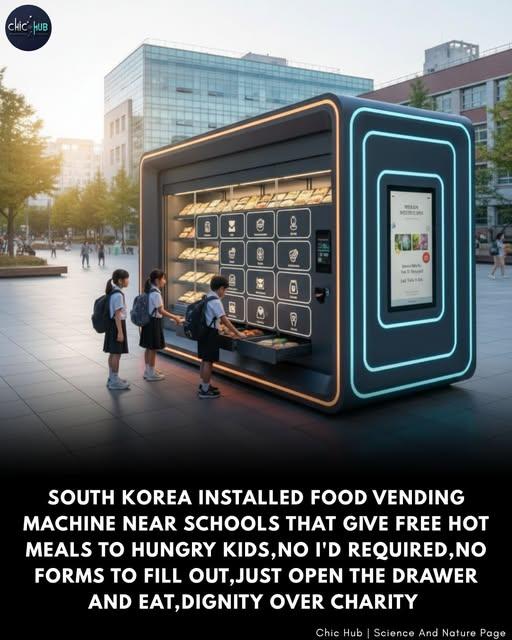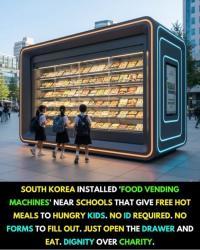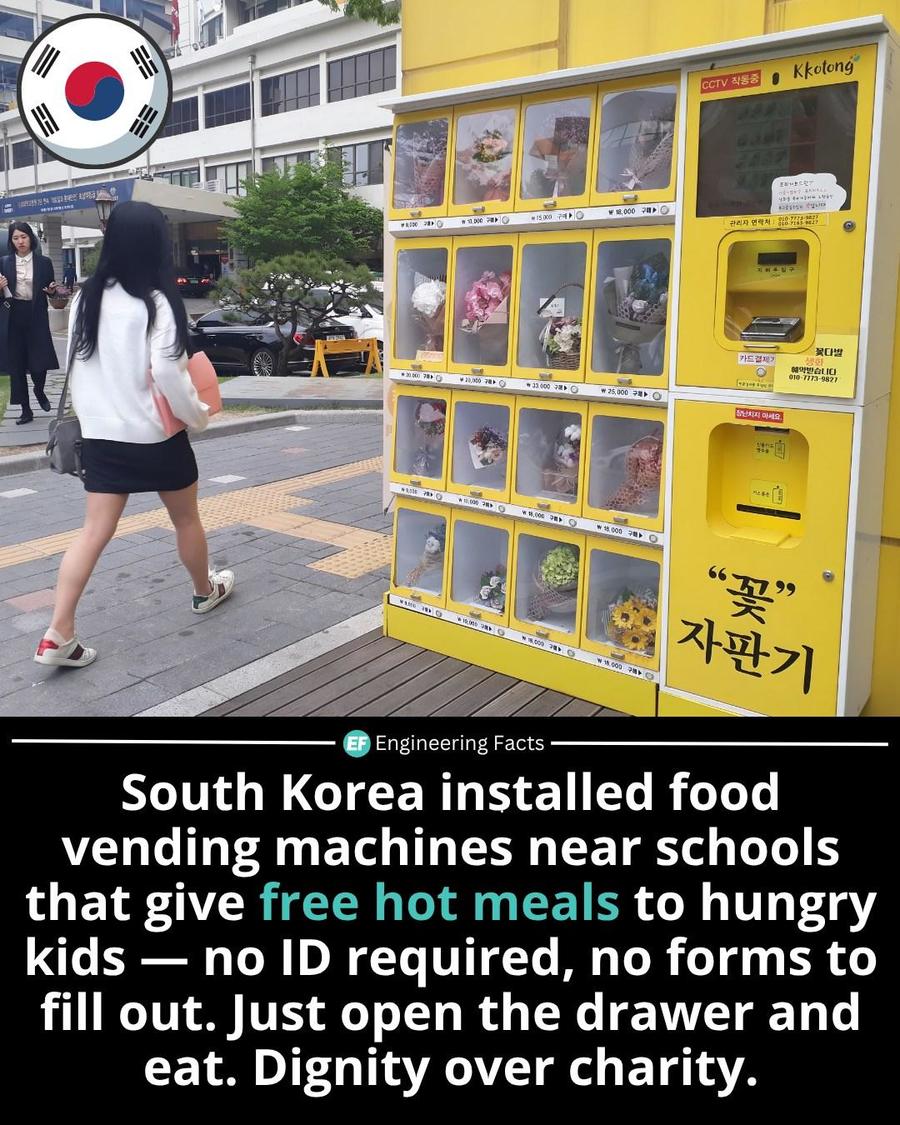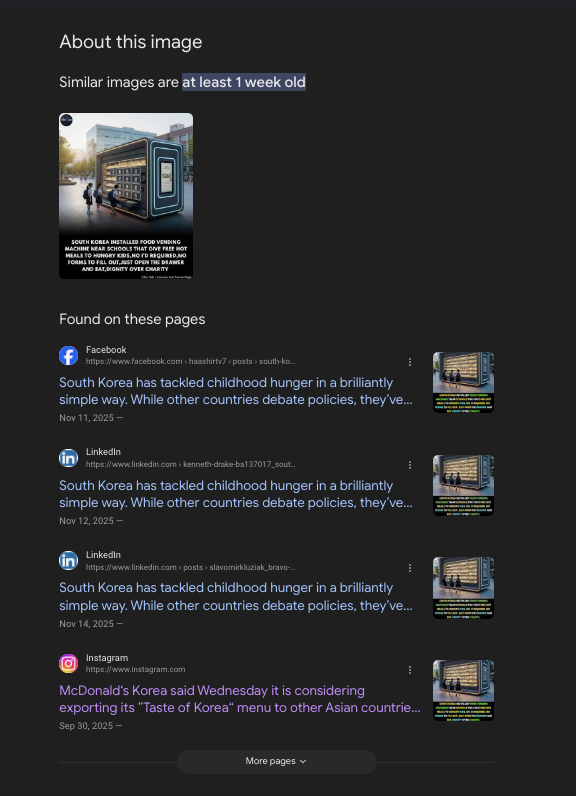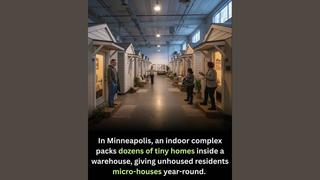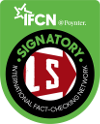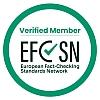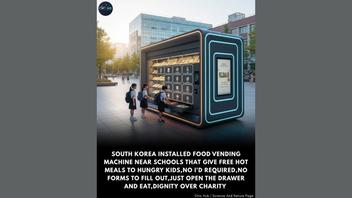
Has South Korea placed vending machines with free hot food near schools to fight childhood hunger? No, that's not true: There were no actual news articles about any such "food vending machines" seen in viral images on social media. South Korea does offer free lunches to all schoolchildren, but they include a variety of items cooked and served in school cafeterias, a program introduced almost 15 years before these posts went viral on social media.
The claim appeared in a post (archived here) published on Facebook on November 20, 2025. It opened:
South Korea has found a powerfully simple way to fight childhood hunger. Instead of endless policy debates, the nation introduced machines that look like ordinary vending units but dispense something far more meaningful than snacks. No paperwork, no judgment, no questions--just hot, nourishing meals available to any child who needs one, quietly and with dignity.
The post included an image with text that repeated the claim in a slightly paraphrased form:
SOUTH KOREA INSTALLED FOOD VENDING MACHINE NEAR SCHOOLS THAT GIVE FREE HOT MEALS TO HUNGRY KIDS, NO I'D REQUIRED, NO FORMS TO FILL OUT, JUST OPEN THE DRAWER AND EAT, DIGNITY OVER CHARITY.
This is what the image from the post looked like on Facebook at the time of writing:
(Source: Lead Stories screenshot of post by "Chic Hub" at facebook.com)
Textual searches showed several images circulating on social media and spreading the same claim. Two examples can be seen here (archived here) and here:
(Source: Lead Stories screenshot of post at instagram.com/p/DRHfwLBEfzg/)
(Source: Lead Stories screenshot of post at facebook.com/engineeringexploration)
One discrepancy that stood out immediately was that, despite the posts implying it was a unified nationwide project, the "food vending machines" had different designs. In some cases, it showed large plastic cube-shaped buttons presumably used to select a specific item from the assortment, but their top row was too high for the children in the picture to reach.
In other instances, the "vending machines" lacked any apparent opening through which to extract the food.
A yellow kiosk seen in additional variations was a flower vending machine.
Lead Stories performed reverse image searches, but did not see any journalistic organization publishing images in question. Search engines only returned duplicates of the claim from social media:
(Source: Lead Stories screenshot of the About-this-image tab on google.com)
The posts presented the free-food program as a brand-new development, but that is not true.
As reported by the Korea Herald (archived here), a major English-language newspaper in South Korea, the program in its current form started as a local project in one province in 2011 and spread to Seoul the same year, even though its origins can be traced back to distribution of milk powder to elementary schools in the early 1950s (archived here) when the country faced food shortages after the Korean War.
By 2022, the free-food program had covered all schoolchildren in South Korea starting from kindergarten and ending with high school.
These lunches are served at school cafeterias, not from vending machines adjacent to schools. For example, this image (archived here) on the City of Seoul website clearly shows an indoor space.
Free food for schoolchildren from vending machines was a U.S.-based pilot project in Weslaco, Texas (archived here). Kids could get packed food such as cereals with milk or peanut butter and jelly sandwiches but it was not an entirely paperwork-free project: Families still needed to receive the codes to access the vending machines.

